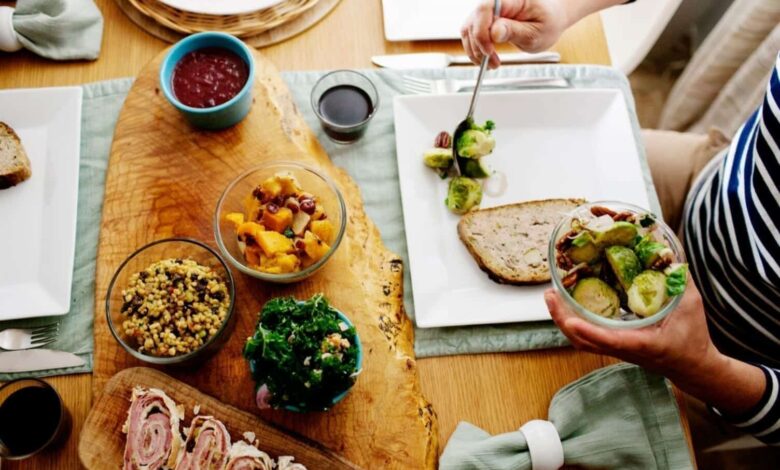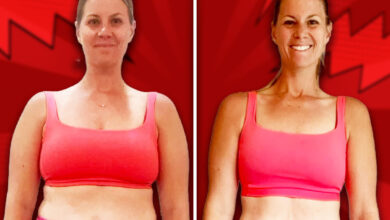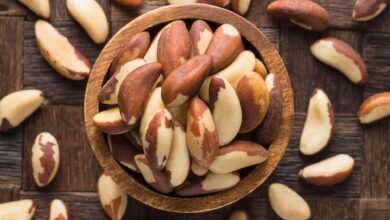This 90-30-50 Macro Method May Be Worth Trying

TikTok has been the birthplace of many diet trends, from the fasting-focused 5:2 diet to the whole food-based Valencia diet. One of the latest to go viral is the 90-30-50 method, which is essentially a form of macro tracking. Some health influencers claim it has helped them lose weight, manage autoimmune diseases, and improve their hormones.
As with any fad diet that comes from social media, it’s important to dig into the science behind it before trying it out yourself. We spoke with registered dietitian Joanna Gregg, RD, to get her expert opinion and dig into whether or not the new trend is as effective as TikTok makes it out to be.
What the 90/30/50 method is
Rather than counting calories, the 90-30-50 method recommends tracking two macros (protein and fat) and fiber. According to a video by the creator of the diet, registered dietitian Courtney Kassis, it requires you to eat a minimum of the following:
- 90 grams of protein
- 30 grams of fiber
- 50 grams of fat
Benefits of the 90-30-50 method
While there isn’t any research specifically on the 90-30-50 method, there is plenty of evidence to generally support eating more protein, fiber, and healthy fats.
- Balanced hormones: “A well-balanced diet at the right caloric level can result in better insulin sensitivity and balance in the hormones that contribute to hunger and satiety,” Gregg explains, citing research that emphasizes the importance of healthy fats in particular.
- Reduced risk of chronic disease: Studies have shown that consuming fiber can play a big role in minimizing the risk of chronic diseases like hypertension, diabetes, and obesity. Gregg adds that a healthy diet, exercise, and a healthy weight are also factors. “If this method of eating leads to these outcomes it can be beneficial to your health,” she says.
- Improved blood sugar: According to one study, eating a high-protein diet (40 percent of total calories from protein) or even just a medium-protein diet (21 percent) can improve blood sugar levels. Regulating your blood sugar is key in preventing long-term health issues like heart disease and diabetes.
Is the 90-30-50 method effective for weight loss?
While Gregg says she doesn’t necessarily see anything wrong with this way of eating, she stresses that weight loss always comes down to a caloric deficit (a.k.a. consuming fewer calories than you burn). “If eating the 90-30-50 method helps you control calories and puts you in a caloric deficit, it would likely result in weight loss,” she explains.
Keep in mind, too, that everyone’s body is different. “The amount a person’s body needs of each nutrient is largely determined by age, sex and activity level,” Gregg explains. If you aren’t sure how much you should be eating, the MyFitnessPal macro calculator is a good place to start.
How to do the 90-30-50 method
If you’ve decided the 90-30-50 method is something you want to try—and you’ve cleared it with your doctor—Gregg has a few tips to help you be successful.
- “Piggyback” your new goals on top of current goals. “For instance, if your goal is to eat breakfast every morning, come up with a high protein, high fiber meal with some healthy fats, like a piece of wheat toast with avocado and egg,” she suggests.
- Increase fiber gradually. If you aren’t currently eating anywhere near the suggested 30 grams of fiber, Gregg says to slowly up your intake by 5 grams every week to avoid bowel issues.
- Prioritize whole foods. In theory, with this diet, you could eat whatever you want as long you hit the minimum numbers. However, Gregg recommends focusing on lean proteins (like chicken or fish), complex carbs (fruits, veggies, and whole grains), and healthy fats (like olive oil or avocado).
- Track your food with the MyFitnessPal app. “The best way to know you’re hitting the minimums is to track!” Gregg explains. There’s even research that shows tracking your intake leads to better diet compliance and more weight loss. In the MyFitnessPal app, you can keep track of how much protein, fiber, and fat you’re eating every day (along with other nutrients and overall calories) and monitor where you can improve.
Even if you don’t follow the 90-30-50 method to the T, there are some good takeaways from it. “This diet could help people prioritize healthy foods over some less desirable ones,” Gregg says, adding that more fiber is something many of us could use.




